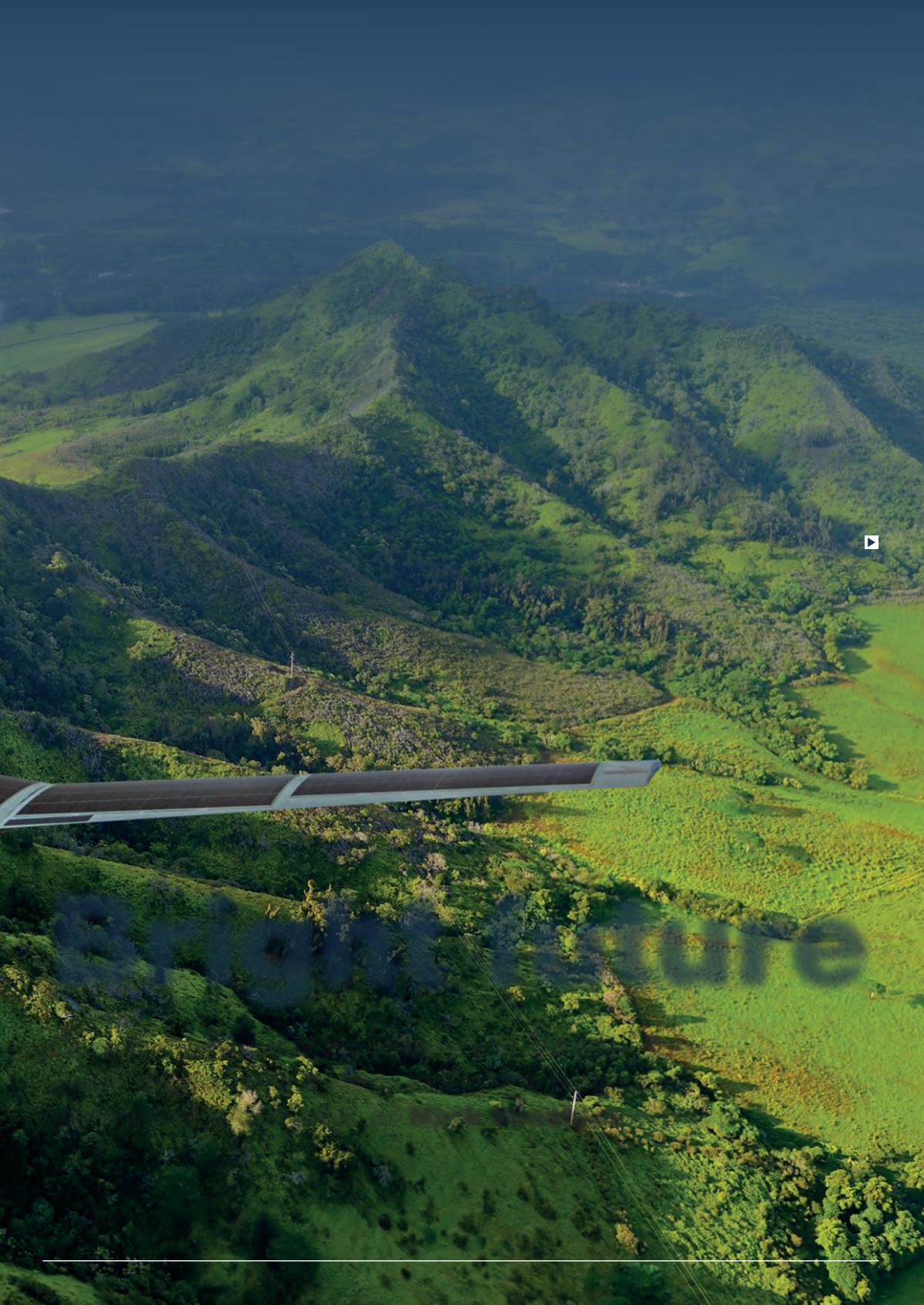

79
of extra space, while the latter two can be
very expensive.
There is, however, another approach
that is gaining momentum: solar power
technology, which has been proven for
decades in space and has improved
dramatically over the years.
The amount by which adding solar
panels to a UAV can boost fight
endurance depends greatly on the
aircraft’s design and mission, but in most
cases it can be an increase of 1.5-2.5x
without any changes to the aircraft’s
structure or electrical systems, and in
cases where aircraft are optimised for
the solar cells, increases of up to 4x are
possible. The thin, lightweight and highly
effcient solar cell technologies now
available can offer immense benefts to
fxed-wing UAVs.
Capturing photons
The solar cell works in several steps. The
photons in sunlight strike the solar panel
and are absorbed by semiconducting
materials, causing electrons to be
excited. Once excited, an electron can
either dissipate the energy as heat
and return to its orbital in an atom or
travel through the cell until it reaches
an electrode. Current fows through the
material to cancel the potential difference
and this current is then captured by the
cell. In this way an array of solar cells
converts solar energy into a usable
amount of dc power.
The traditional material for a solar
cell is silicon which, while relatively
inexpensive, is too heavy for UAVs. When
the space industry was using silicon it
had a certain dollar/Watt that it was used
to working to, but using these silicon
panels brought the burden of a great
deal of mass and volume to the platform.
Over time, the industry began to take a
more integrated approach, looking at
solar panels as part of the entire platform
rather than an add-on, and it discovered
that although it was more expensive
to look at lighter, thinner solar panels it
enabled many important technologies,
such as better resolution of sensors,
better data and longer fight durations.
That realisation that solar can become
more valuable when integrated into
the overall design of a platform is now
permeating through to the UAV sector.
One solar cell manufacturer reports
that although the industry was originally
shocked at how much solar power cost as
dollars/Watt, it is now warming to the
Solar power |
Focus
Once the preserve of the military and satellites, solar
power is becoming a viable tool for the burgeoning
commercial UAV market, as
Mark Venables
explains
Bright future
Unmanned Systems Technology
| June/July 2016









